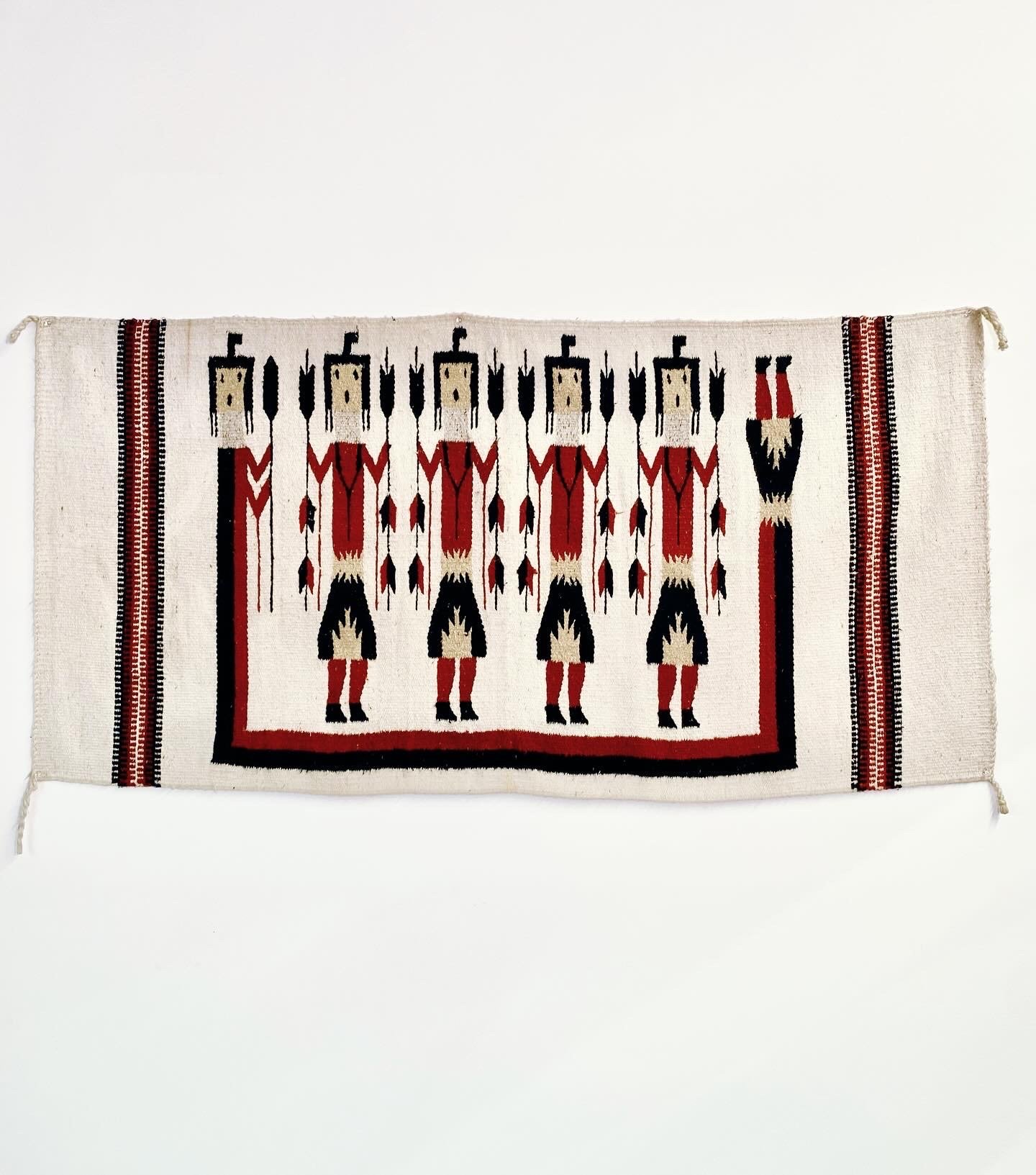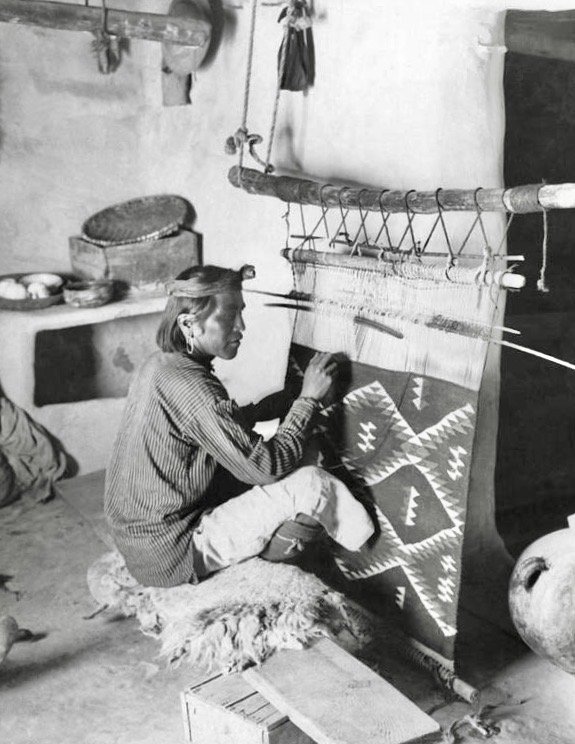 Image 1 of 4
Image 1 of 4

 Image 2 of 4
Image 2 of 4

 Image 3 of 4
Image 3 of 4

 Image 4 of 4
Image 4 of 4





Navajo Yei Weaving
Navajo Yei blanket, from the Shiprock region, New Mexico. The Navajo (Diné) People and their Pueblo neighbors have made woven goods from plant fibers for millennia. After Spanish colonists introduced hardy Churro sheep In the late 17th century, the Navajo became pastoralists; with lots of wool on their hands, their weaving really took off. The Navajo initially wove blankets and rugs for their own use, but by the late 19th century, their skillful work became a valuable trade commodity.
This classic design represents a group of Navajo gods called the Yeibicheii (“Holy People”) or Yei for short. Their geometric forms are derived from the sandpainting (or drypainting) tradition, in which sacred images are created for ceremonies, then destroyed. In the early 20th century, there was some discussion among weavers about the appropriateness of reproducing such images for sale. Some felt it was OK, while others expected the worst. In the end, the Yei did not seem to mind at all. Weavings featuring Yei are not sacred, and are not used in rituals.
The Yei are always shown facing the viewer. Those with angular heads (like these) are female, and those with rounded heads are male (A similar pattern depicts the Yeibichai, human dancers who impersonate the Yei in ceremonies; such figures are always depicted in profile, however.). These Yei are surrounded on three sides by the elongated body of the Rainbow Yei, extending down each side and across the bottom. The rainbow is the path of the Yei. During the summer monsoon, rainbows can be seen everywhere in Navajo country.
30“ x 60“. Wool, mid-20th century.
Navajo Yei blanket, from the Shiprock region, New Mexico. The Navajo (Diné) People and their Pueblo neighbors have made woven goods from plant fibers for millennia. After Spanish colonists introduced hardy Churro sheep In the late 17th century, the Navajo became pastoralists; with lots of wool on their hands, their weaving really took off. The Navajo initially wove blankets and rugs for their own use, but by the late 19th century, their skillful work became a valuable trade commodity.
This classic design represents a group of Navajo gods called the Yeibicheii (“Holy People”) or Yei for short. Their geometric forms are derived from the sandpainting (or drypainting) tradition, in which sacred images are created for ceremonies, then destroyed. In the early 20th century, there was some discussion among weavers about the appropriateness of reproducing such images for sale. Some felt it was OK, while others expected the worst. In the end, the Yei did not seem to mind at all. Weavings featuring Yei are not sacred, and are not used in rituals.
The Yei are always shown facing the viewer. Those with angular heads (like these) are female, and those with rounded heads are male (A similar pattern depicts the Yeibichai, human dancers who impersonate the Yei in ceremonies; such figures are always depicted in profile, however.). These Yei are surrounded on three sides by the elongated body of the Rainbow Yei, extending down each side and across the bottom. The rainbow is the path of the Yei. During the summer monsoon, rainbows can be seen everywhere in Navajo country.
30“ x 60“. Wool, mid-20th century.